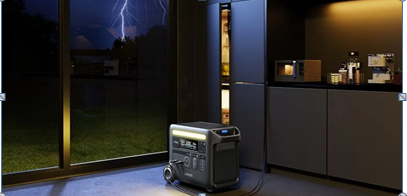Essential Tips for Maintaining Garden Containers Throughout the Seasons

Garden containers are an excellent way to bring life and color to your outdoor space. They offer flexibility, allowing you to grow various plants, from vibrant flowers to fresh vegetables, even in small spaces. However, because plants need and weather patterns change with the seasons, it can be difficult to maintain garden containers. In this article, we’ll share some essential tips to help you keep your garden containers thriving year-round.
1. Select the Appropriate Plant Container
The foundation of healthy plants starts with selecting the right garden container. When choosing containers, make sure they are the appropriate size for your plants’ root systems. Too large and the soil will retain too much moisture, causing root rot; too small and the roots will become crowded and struggle to grow. Containers should also have adequate drainage holes to avoid water buildup at the bottom, which can cause root rot.
Materials matter, too. Plastic containers are lightweight, affordable, and retain moisture well, making them ideal for hot climates. Ceramic and clay pots, while aesthetically pleasing, tend to dry out quicker but are great for plants that don’t like excess moisture. Ensure that the container material suits your specific plant types and environmental conditions.
2. Watering Strategies for Garden Containers
Proper watering is one of the most important aspects of container garden maintenance. Since containers dry out much faster than in-ground soil, it’s essential to keep an eye on the moisture levels, especially during hot weather.
A good rule of thumb is to water the garden container deeply but less frequently. Instead of light, daily watering, try to water thoroughly once or twice a week, depending on the weather and type of plants. Be sure to check the moisture level by sticking your finger into the soil. If it feels dry, it’s time to water. If it feels moist, wait a day or two before watering again.
Consider using self-watering containers, which have a built-in reservoir to maintain consistent moisture levels. These are perfect for busy gardeners or those who travel frequently.
3. Fertilizing Your Container Plants
Because container plants have less access to nutrients, it’s critical to fertilize them frequently to support their growth. The soil in a garden container will gradually deplete its nutrients, which can stunt plant growth and make them more susceptible to diseases.
For optimal growth, fertilize your plants every 4-6 weeks with a balanced, slow-release fertilizer. Liquid fertilizers are also an option for quicker nutrient absorption. Be careful not to over-fertilize, as this can burn the roots. In order to prevent nutrient imbalances, always adhere to the directions on the fertilizer packaging.
4. Protecting Plants from Extreme Weather
Garden containers are especially vulnerable to extreme weather conditions. In the summer, plants in containers are exposed to the harsh sun, which can dry out the soil quickly. In the winter, freezing temperatures can damage plant roots and pots.
To protect your plants, consider moving your garden containers to a shaded area during peak summer heat. You can also group containers together to provide mutual shade and reduce moisture loss. During the winter months, protect your garden containers by either moving them to a sheltered location or covering them with frost cloths or burlap. If possible, place containers on a raised surface to prevent them from freezing to the ground.
Consider using foam insulation or burlap to insulate the pots for plants that are susceptible to cold. You can also bring certain plants indoors or into a garage if temperatures drop too low.
5. Pruning and Deadheading for Healthier Growth
Maintaining a healthy appearance for your garden containers involves regular pruning and deadheading. Pruning helps improve the plant’s shape, removes dead or diseased branches, and encourages healthy new growth. Removing spent flowers, or deadheading, inhibits the plant’s ability to produce seeds and promotes more blooms.
Be sure to prune your plants regularly, especially after blooming, to keep them looking fresh and vibrant. This will not only improve the appearance of your garden containers but also help prolong the blooming season.
6. Repotting When Necessary
As your plants grow, they may eventually outgrow their garden container. Roots will begin to crowd the pot, and the plant’s growth may slow down. It’s important to check your plants every year to determine whether they need repotting.
Repotting should ideally be done in the spring when plants are emerging from dormancy. Examine the roots after carefully removing the plant from its previous container. If they are tightly packed or circling the pot, it’s time to move your plant to a larger container. Your plants will have more room to grow if you use fresh soil and a slightly bigger pot.
7. Cleaning Containers Between Seasons
Cleaning your garden containers between seasons is an often-overlooked task that can significantly impact the health of your plants. Old soil can harbor pests, diseases, and fungal spores, which can be harmful to your new plants. Before storing containers for the winter or using them for new plants in the spring, clean them thoroughly with soap and water. To remove any lingering dirt, scrub with a brush. To eliminate any remaining pathogens, use a diluted bleach solution to disinfect the pots as an additional precaution.
Conclusion
Maintaining garden containers requires attention to detail throughout the year, but with these essential tips, your plants can thrive in every season. By choosing the right container, ensuring proper watering and fertilization, protecting against extreme weather, and keeping up with regular pruning and cleaning, you’ll have a flourishing garden container setup that adds beauty to your space year-round. Happy gardening!





